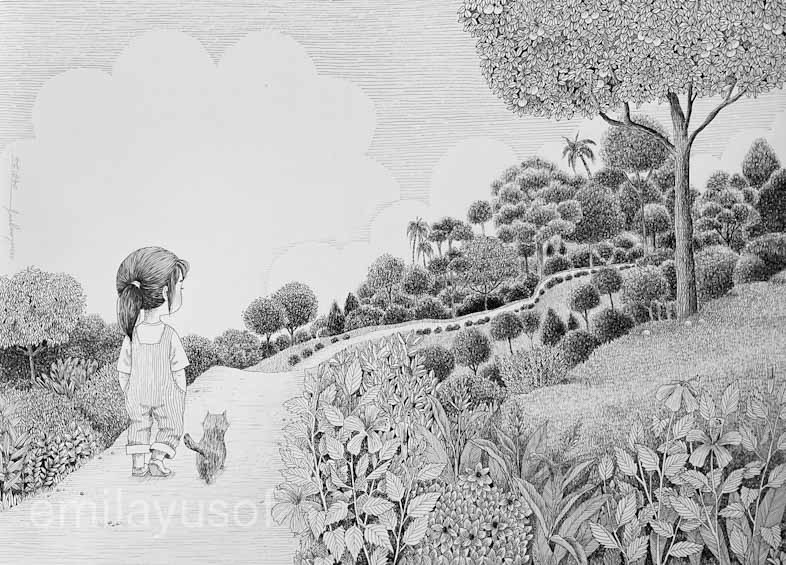In the Lines of Imagination: The Allure and Artistry of Black and White Illustrations for Children’s Picture Books
Have you ever considered the magic that unfolds within the lines of black and white illustrations in children’s books? While vibrant colors often dominate the shelves, there’s a timeless appeal to the simplicity and artistry of monochromatic drawings that deserves its own spotlight.

When I was a child, I found myself drawn to the enchanting world of black and white illustrations. Now, even as an adult, I distinctly remember spending hours studying the black and white illustrations in encyclopedias—each line and shading telling a story that seemed to come alive on the page. In those moments, I discovered a visual allure that surpassed the typical images found in textbooks.
In a sea of colors, black and white illustrations stand out with their elegance and simplicity. Stripped of hues, these drawings possess a classic allure that transcends trends, creating a visual experience that resonates across generations. The absence of color distractions allows young readers to focus on the essence of the images, making each stroke of the artist’s pen a deliberate and meaningful contribution to the story.
One of the remarkable qualities of black and white illustrations lies in their ability to spark imagination. With no predetermined colors, children are encouraged to fill in the blanks with their own vibrant ideas. This engagement prompts a deeper connection to the narrative, turning each page into a canvas where young minds paint the story with their unique shades of creativity.
Black and white illustrations extend beyond aesthetics; they hold educational value. The simplicity of these drawings aids in comprehension, making them suitable for early learning materials. The absence of color constraints also makes them more accessible, contributing to inclusivity in children’s literature.
Creating black and white illustrations for children’s books involves a delicate balance between simplicity and expressiveness. Here are basic standards for black and white line drawings that contribute to the success of these drawings:
- Expressive Characters: Characters should convey emotions that resonate with the narrative, adding depth to the storytelling.
- Age-Appropriate Style: Tailor the artistic style to the age group of your target audience, ensuring it aligns with their developmental stage and interests.
- Engaging Composition: Opt for dynamic compositions that guide young readers through the story seamlessly, maintaining visual interest.
- Consistency: Maintain a consistent artistic style throughout the book for a cohesive visual experience.
- Clarity and Detailing: Prioritize clarity in illustrations, ensuring they clearly depict characters, objects, and scenes while balancing appropriate detailing.
- Playful Elements: Infuse a sense of playfulness and imagination, capturing the whimsical nature of childhood.
Closing Thoughts:
As we celebrate the allure of black and white illustrations, let’s recognize the artistry that goes into crafting these captivating visuals. They are not mere lines on a page; they are an invitation for young minds to embark on a journey of imagination. So, open the pages, explore the simplicity, and let the magic of black and white illustrations unfold in the hearts and minds of the next generation of readers.